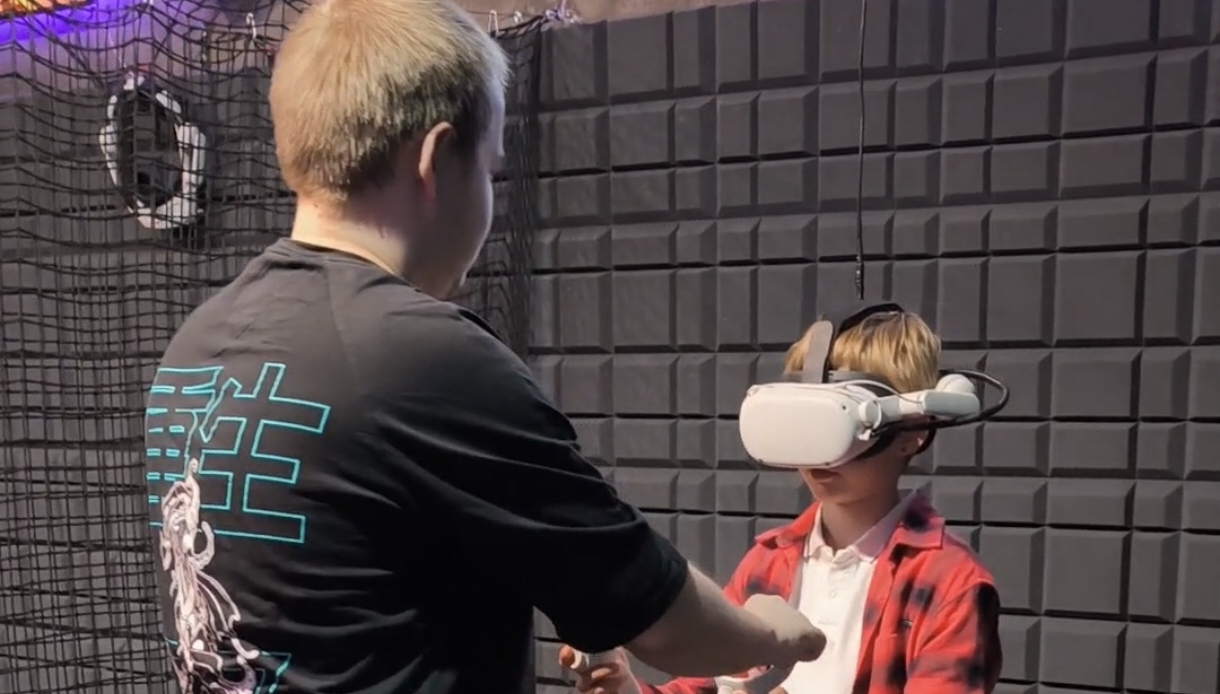
Imagine: you put on virtual reality glasses and find yourself in Ancient Egypt, walking among the pyramids. Or discussing physics with your classmates in a digital laboratory, where you can blow up (virtually!) a couple of test tubes to understand Newton's laws. This is not science fiction from the movies, but the reality of 2025, where the metaverse and virtual reality (VR) are changing school education. Let's take a look at how it works and why it's so cool!
What are the metaverse and VR in education?
The metaverse is a vast digital world where you can learn, communicate, and create without leaving your home. It's like a social network, but in 3D, where you are an avatar and you are surrounded by a whole universe of possibilities. Virtual reality is part of the metaverse where, with the help of VR glasses, you can completely immerse yourself in another world: from space to the depths of the ocean.
These technologies are already being used in schools to make lessons lively and memorable. Forget boring textbooks — now you can ‘visit’ historical events or conduct experiments in a virtual laboratory!
Why does it work?
- Lessons become an adventure
Instead of reading about World War II, you can ‘walk’ through a virtual museum with real exhibits. Chemistry? Create molecules in 3D, just like in a video game. Students who used to fall asleep in class are now eagerly awaiting what comes next. - Safe experiments
Want to study volcanoes? In VR, you can look into the crater of a volcano without risking getting burned. And in a virtual laboratory, you can mix chemicals without the risk of an explosion (well, except for a digital one!). - Learning together, even from a distance
The metaverse brings together schoolchildren from all over the world. You can work on a project with kids from another country while sitting in the same virtual room. It's like Zoom, only a hundred times cooler. - Everyone has their own pace
Virtual platforms adapt to you. If you grasp the material quickly, the system will offer you more challenging tasks. If you need more time, you will receive hints and additional lessons.
How is this already being used in schools?
Schools around the world are experimenting with VR and the metaverse. For example:
- In the United States, schoolchildren study biology by ‘travelling’ inside the human body to see how organs work.
- In Japan, students visit virtual museums and temples to learn about history and culture.
- In Europe, metaverses are being created for language courses, where schoolchildren practise English by communicating with native-speaking avatars.
There are also platforms such as Spatial, where teachers create their own virtual classrooms. There, you can hold lessons, quizzes or even school parties!
What can students do?
The metaverse is not only about learning, but also about creativity. Schoolchildren can:
- Create their own virtual worlds (for example, in Minecraft Education or Roblox Studio).
- Program VR games or simulations.
- Participate in quests where they have to solve math or physics problems to ‘pass the level.’
For example, students at a school in Australia created a virtual model of the solar system where you can ‘fly’ between planets and learn all about them. Cool, right?
The use of the metaverse and virtual reality (VR) in education opens up incredible opportunities, but, as with any technology, there are drawbacks.
Health issues
Prolonged use of VR headsets can cause dizziness, eye strain, or discomfort for some students.
How to minimise:
- Limit time in VR (e.g., 15–20 minutes per lesson).
- Take breaks and do exercises for the eyes and body.
- Check equipment for ergonomics and adjust it for each student (e.g., adjust the straps on the glasses).
Distraction from learning
The metaverse is similar to a game, and students may be distracted by creating avatars or ‘wandering’ through the virtual world instead of studying.
How to minimise:
- Set clear rules for use (e.g., limit avatar customisation outside of class).
- Use gamification for educational purposes: rewards for completing tasks, not for ‘decorating’ avatars.
- Involve teachers as moderators of virtual classrooms.
Why is this important for us?
The metaverse and VR are not just buzzwords. They make learning fun, help you understand complex topics, and prepare you for a future where technology will be everywhere. So put on your virtual reality glasses, create your avatar, and embark on an educational adventure. Learning has never been so exciting!



